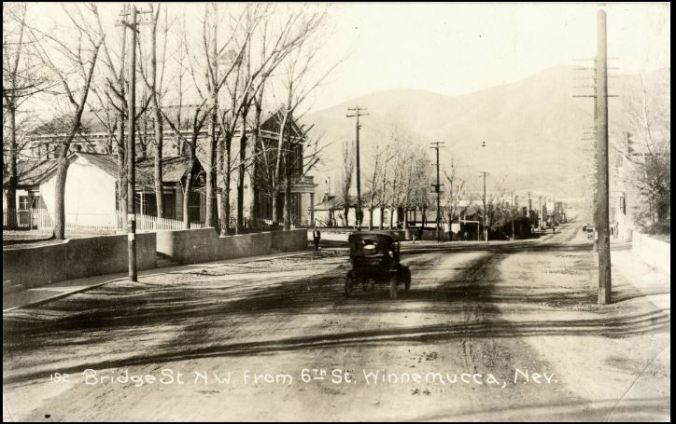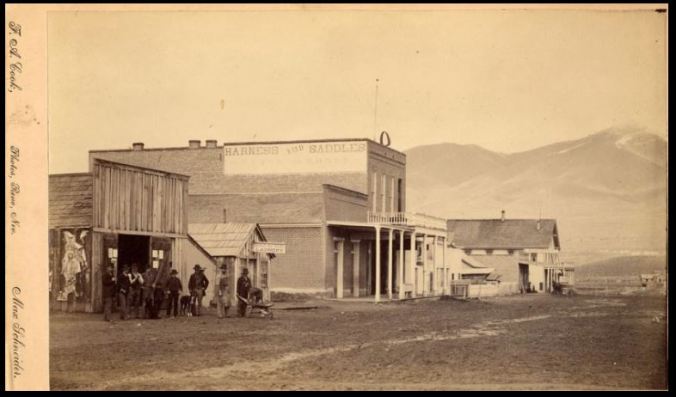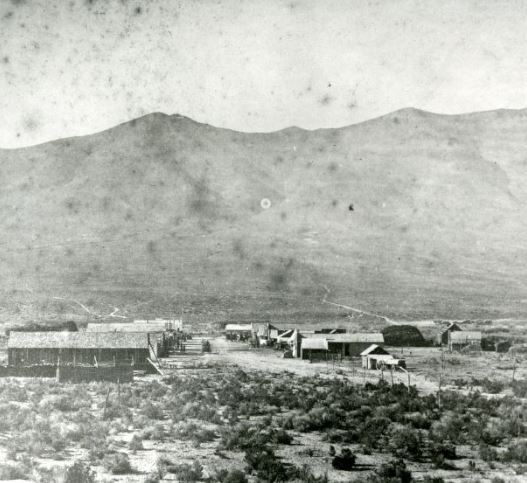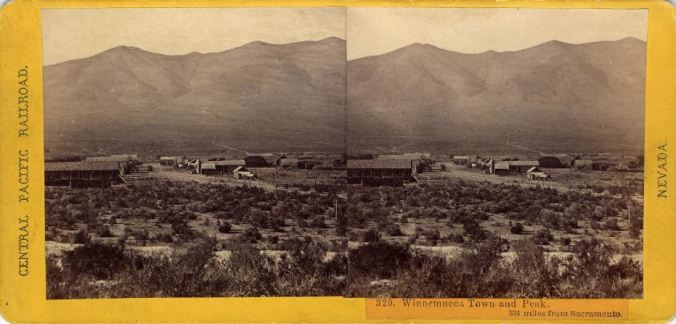Unionville and Winnemucca, Nevada

Photo of an automobile in the streets of Winnemucca, c 1910-1920 |

Winnemucca, Nev., circa 1880-1899 |

Early view of Winnemucca, circa 1860-1870 |
|
Winnemucca town and peak, 1869 |

Bridge Street, Winnemucca, circa 1920 |

Photo of view from courthouse, Winnemucca, early 1910s |
The Silver State news title group:
The Silver State (1870-1903) LCCN: sn84022060 https://chroniclingamerica.loc.gov/lccn/sn84022060/
The Daily Silver State (1903-1907) LCCN: sn86076224 https://chroniclingamerica.loc.gov/lccn/sn86076224/
The Silver State News (1907-1909) LCCN: sn86076356 https://chroniclingamerica.loc.gov/lccn/sn86076356/
The Silver State (1909-1925) LCCN: sn86076247 https://chroniclingamerica.loc.gov/lccn/sn86076247/
****************************************************
In 1862, in anticipation of development in the local mining district in Humboldt County, a few early settlers established a fledgling town at the crossroads where wagon trains heading west and south to the Sierra Nevada passes forded the Humboldt River. The settlement was later named Winnemucca, after the respected chief of the local Northern Paiute Tribe. Chief Winnemucca’s daughter, Sarah Winnemucca, became renowned as an advocate for the education and fair treatment of the Paiute and Shoshone peoples and author of the first autobiography by a Native American woman. On September 16, 1868 construction of the Central Pacific Railroad reached the town, which was a natural choice for a depot on the new intercontinental railroad. Winnemucca flourished as a regional business and distribution center and became home to many Chinese railroad workers, Basque settlers, and local Western Shoshone and Northern Paiute communities. By 1872, it was the largest town in Humboldt County, and the Nevada State Legislature moved the county seat from Unionville to Winnemucca. Today it is the only incorporated city in Humboldt County and is still at a crossroads, where Interstate 80 crosses U.S. Highway 95.When the Central Pacific Railroad bypassed Unionville, the original county seat, that town declined rapidly and lost not only its status as county seat, but also its newspapers. Its first paper, the Humboldt Register [LCCN: sn84020373], which appeared in 1863, suspended publication in 1869 and moved, after a stopover in Elko, to Winnemucca where it continued as the Humboldt Register. In 1870, John C. Hall, a local mine owner and merchant in Unionville, started the Silver State [LCCN: sn84022060], which then went through a number of owners and editors until 1874, when Peter Meyers and J.J. Hill suspended its publication and moved their press from Unionville to Winnemucca; on September 10, 1874, they revived the Silver State. J.J. Hill and Co. managed the paper until 1890 when the Silver State Publishing Co., owned by banker and future U.S. Senator George S. Nixon, acquired the paper. In 1902 Nixon headed south to find his fortune in the silver strike in Tonopah, and sold the paper to the Winnemucca Publishing Co. In the next two years the paper went through a rapid succession of editors, and its name was briefly changed to the Winnemucca Republican [LCCN: sn84022060], followed by the DailySilver State [LCCN: sn86076224] in 1903, eventually reverting back to the Silver State [LCCN: sn86076247] in 1909 until its demise in 1925. Another brief interlude occurred in 1907 when the paper’s owner considered Silver State “in itself is hardly suitable for a newspaper” and added News to the title (Silver State News [LCCN: sn86076356]), only to have it excised from the banner head the following year by the new owner. With the rapidly changing editorial control, so, too, was the paper’s frequency of publication altered, from weekly to daily, then back to semiweekly, then triweekly, weekly and back again to a semiweekly. In its last year it went from semiweekly to triweekly then daily, and then back to triweekly at which point the paper finally died in the hands of a receiver and was bought by its Democratic competitor the Humboldt Star [LCCN: sn86091472] which added Silver State to its name, the Humboldt Star and the Silver State [LCCN: sn86091470]. But while it was published, the Silver State retained its monopoly as the county’s leading newspaper.
__________________________________________________
Any views, findings, conclusions, or recommendations expressed in this web resource do not necessarily represent those of the National Endowment for the Humanities.
